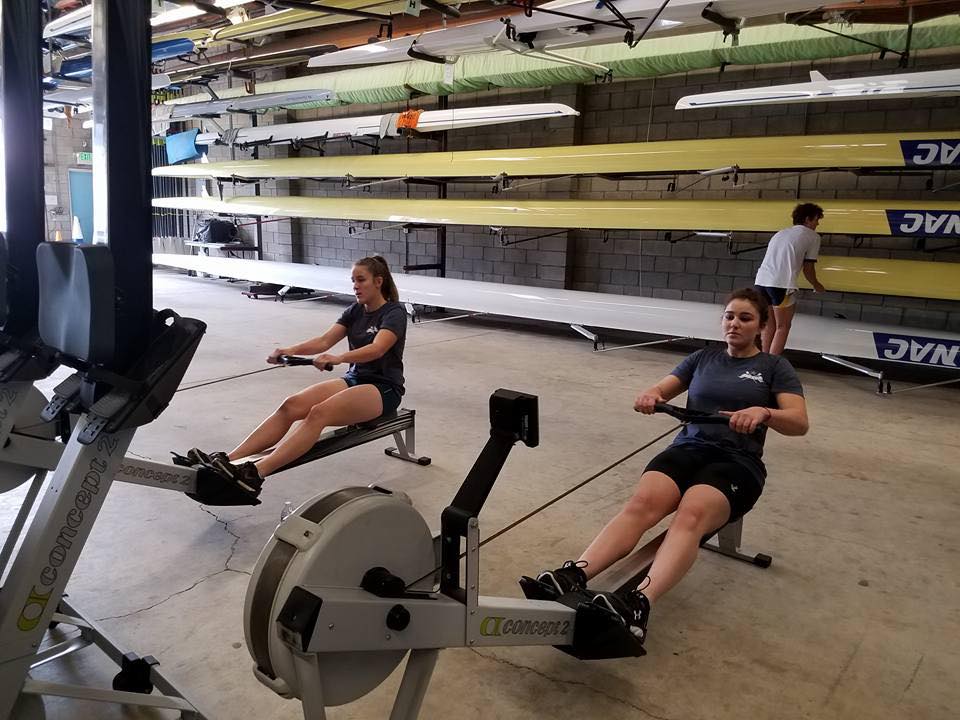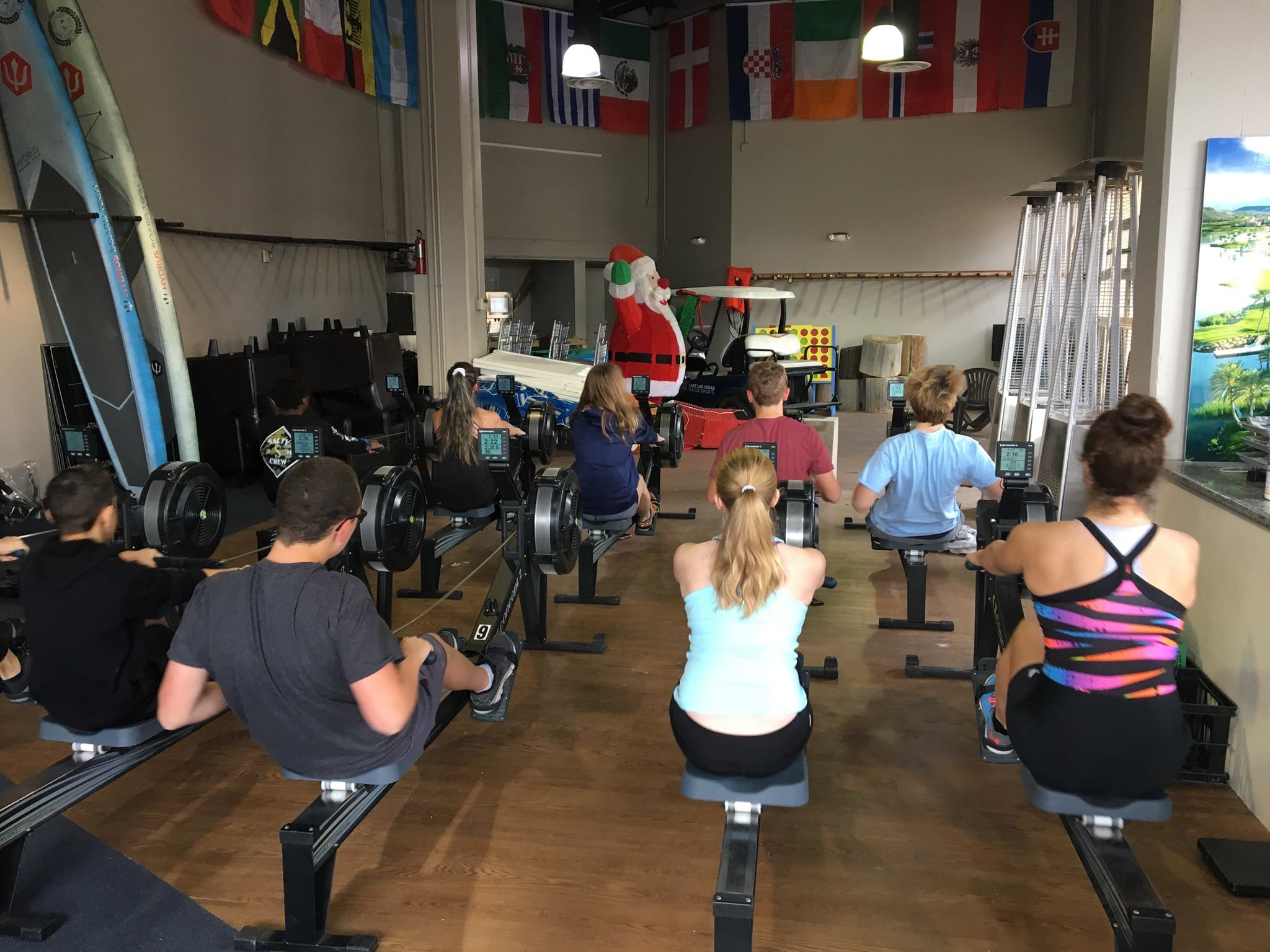Rowing 101: The perfect triathlon cross-training activity you probably haven’t tried
Your guide to one of the most effective cross-training activities for a triathlete


There is no doubt that swim/bike/run, day in and day out can become mentally draining. In the offseason, and during certain times of the season, I recommend that all athletes do something that does not involve swimming, cycling, or running.
One great exercise to break up the dullness of swim/bike/run is rowing. I personally love the rowing machine. I believe it to be one of the best full body workouts possible, especially if you are a triathlete in cross training. In a rowing workout, all the major muscle groups used in swimming, cycling, and running are also used. The great thing about rowing, is that it in does not just offer aerobic benefits, but it also offers strength and power benefits. These benefits are spread from the calves all the way up to the shoulders, and nearly everything in between.

How will rowing help you as a triathlete?
Many people’s first instinct is to think that rowing will only benefit the swim portion of a triathlon. In actuality, your bike is what will most likely see the biggest boost in performance. If you’re rowing with solid technique, your legs are doing the majority of the work, and your arms are really just finishing the movement. I advise you to focus on using your legs as the primary driver to generate the most power.
While the biggest boost comes for the power drive of the legs, the benefits for swimming are still significant. Rowing helps build key muscles for swimming, and also helps build up your core.
When should I row?
I advise rowing anytime the athlete is looking for a cross training tool. Rowing is an outstanding alternative to swimming, when swimming isn’t available.
Some athletes like to row for 10-15 minutes as a warm up before swimming, biking or running, or even before doing their strength work.
If you are a “serious” triathlete, it’s important to not over use the rowing machine though. While I do believe rowing is better in some cases as an overall fitness tool, it can’t totally replace your swim, bike, or run.
Coach Paul’s favourite rowing workout:
Try this one:
3 x 10 minutes “ascending” wattage
Use the power meter that’s included on most row machines. This is 3 sets of 10 minutes, with 3:00 recovery between. This workout requires practicing patience and pacing. The first set should have the lowest wattage, then each set should have a higher average wattage. A good example of your workout should look as follows.
- 10:00 @ 150w @ 20 spm
- 10:00 @ 160w @ 22 spm
- 10:00 @ 175w @ 24 spm
- The last effort should be HARD.
Next time you do the workout. Take the average of the 3 sets, and make that wattage your starting point, build up from there daily.
Professional Triathlete, QT2 Systems Coach, and ex collegiate rower Doug Maclean also adds this comment:
Wattage can be used in rowing, but “500 meter pace” is the universal language of indoor rowing (like “mile pace” is for running). So I’d recommend giving workouts in 500 meter pace. So, for your workout, it might be something like:
- 10:00 @ 2:25 @ 20 spm
- 10:00 @ 2:15 @ 22 spm
- 10:00 @ 2:05 @ 24 spm
- Pace is measured per 500m
A few key things to think about while rowing:
- The handle should never hit your knees, if this happens, your form is off, play with your form and make it comfortable.
- Knee hyperextension. Your knees should NOT hyperextend, nor should they bow outward.
- Smooth is key. Try to find a nice, solid, “ratio” in your rowing. “Ratio” refers to time spent on the recovery phase, compared to time spent during the drive phase. Ideally, the recovery should take longer than the drive, as you explode back on the slide during the drive, and then relax as much as possible on the recovery, to recharge for the next stroke.
- Play around with different stroke rates, but when you raise your stroke rate, do it by increasing the power on your drive, not by just “racing back up the slide” during the recovery.
- High resistance is not necessary. The key to generating the most power is finding a smooth stroke and being consistent. If your resistance is too high, it could actually damage your generation of power, and increases injury risk to the lower back. Find a resistance that allows you to stay smooth.
- Keep a firm, but relaxed, grip on the handle.
- The initial part of the drive should be almost entirely legs. The back doesn’t open up until a bit later, and then you don’t want to use the arms until you’re almost at the finish of the drive.
- Keep it fun.
About the author:
 Paul is a United States Army Veteran, USAT Certified Coach, QT2 Systems Level 1 Coach, and OutRival Racing Level 3 coach.
Paul is a United States Army Veteran, USAT Certified Coach, QT2 Systems Level 1 Coach, and OutRival Racing Level 3 coach.
Paul also competes in triathlon and running events in his spare time.
70.3 PR (4:24:26)
140.6 PR – (9:51:53)
Half Marathon – (1:24:21 open)
Marathon – (2:57:27)
To learn more about Paul, go to www.qt2systems.com/coach-paul-duncan/
